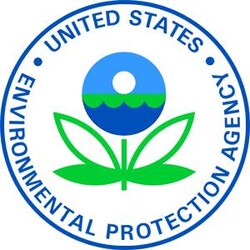
미국 환경보호청(EPA)은 와바시 카본 서비스(Wabash Carbon Services LLC)가 최종적으로 이산화탄소를 지하에 주입하고 영구 저장하기 위한 두 개의 지하 주입정을 건설을 승인했다고 밝혔다.
두 개의 관정은 버밀리언(Vermillion) 카운티와 비고(Vigo) 카운티에 설치될 예정이다. 검토 및 대중의 의견을 수렴해 EPA는 엄격한 안전 조치를 포함한 초기 승인을 위한 모든 요건을 충족했다고 판단했다. 이 주입정은 설치되면 이산화탄소 주입 전 EPA에게 별도의 승인을 받아야 한다.
데브라 쇼어(Debra Shore) EPA 지역 5 관리자는 "철저한 기술 검토와 1천 개 이상의 대중 의견을 고려해 EPA는 제안된 두 지하 주입정이 앞으로 나아갈 공중 보건 및 안전 요구 사항을 충족한다고 결정했다"면서 “이번 조치는 버밀리언 및 비고 카운티의 인근 지역 사회와 필수 지하수 자원을 보호하는 동시에 기후 변화에 영향을 미치는 산업 이산화탄소 배출을 줄이는 데 도움이 될 것이다. EPA는 건설이 진행됨에 따라 이들 지역사회와의 지속적인 참여를 기대한다”고 말했다.
대기로의 배출을 줄이기 위해 탄소를 지하에 저장하는 과정을 '탄소 격리(carbon sequestration)'라 말한다. EPA가 주입 시작을 승인하면 와바시는 12년의 주입 기간에 걸쳐 지하 주입정에 연간 최대 167만 미터톤의 이산화탄소를 주입할 계획이다.
와바시는 제안된 이산화탄소 주입 12년 동안과 그 후 10년 동안 보고 요구 사항을 지속적으로 모니터링하고 이행해 지하 주입정이 제대로 작동하고 이산화탄소가 주입 위치에서 이동하지 않으며 식수원이 보호되는지 확인해야 한다.
지하 약 5천 피트 아래의 암석층에 이산화탄소를 안전하게 저장할 수 있는지 확인하기 위한 광범위한 연구를 통해 지하 주입정 건설 부지가 선정됐으며, 해당 부지에 대한 연구에 따르면 해당 지역의 가장 깊은 식수 공급원과 제안된 이산화탄소 저장소 사이에 투과성이 매우 낮은 셰일을 포함해 약 2천100피트의 견고한 암석이 있어 효과적이고 불침투성의 격리 구역을 만들 수 있는 것으로 조사됐다.
EPA는 탄소 포집, 활용 및 격리 기술의 발전이 지역 사회의 의견을 통합하고 최고의 과학을 반영하는 책임 있는 방식으로 수행되도록 환경 품질 위원회의 지침을 따른다. 「안전한식수법」에 따라 EPA는 지하에 저장된 이산화탄소로부터 지하 식수원을 보호하기 위해 구체적이고 엄격한 기준을 개발했다. EPA는 「안전한식수법」에 따라 탄소 격리 프로젝트에 대한 광범위한 대중 참여를 계속 촉진할 방침이다.
[원문보기]
EPA Approves Permits to Begin Construction of Wabash Carbon Services Underground Injection Wells in Indiana’s Vermillion and Vigo Counties
Today, the U.S. Environmental Protection Agency (EPA) issued permits that allow Wabash Carbon Services LLC to construct two wells for the eventual injection and permanent storage of carbon dioxide underground, one at a site in Vermillion County and another in Vigo County, Indiana. Following extensive review and public engagement, EPA determined that the wells meet all requirements for initial approval, including stringent safety measures. Once the wells are constructed, the applicant will require separate approval from EPA before underground injection of carbon dioxide can begin, and the agency will maintain robust oversight. These underground injection wells will be used to store carbon dioxide from nearby fertilizer production that has been captured prior to release to the atmosphere, reducing emissions that contribute to climate change.
“After a thorough technical review and engagement with the public, including consideration of over 1,000 public comments, EPA has determined that the two proposed wells meet public health and safety requirements to move forward,” said EPA Region 5 Administrator Debra Shore. “Today’s action will help reduce industrial carbon dioxide emissions that contribute to climate change while protecting nearby communities and essential groundwater resources in Vermillion and Vigo counties. We look forward to continued engagement with these communities as construction proceeds.”
The process of storing carbon underground to reduce emissions into the atmosphere is known as “carbon sequestration.” If and when EPA authorizes the start of injection, Wabash Carbon Services plans to inject up to 1.67 million metric tons of carbon dioxide per year into the wells over an injection period of 12 years. Wabash is required to continuously monitor and fulfill reporting requirements—during the 12 years of proposed carbon dioxide injection and 10 years thereafter—to ensure that the injection wells work properly, the carbon dioxide does not move from its injected location and drinking water sources are protected.
The well sites were selected following extensive research to ensure the carbon dioxide can be safely stored in the rock formations about 5,000 feet below the ground. Studies of the site show that there is about 2,100 feet of solid rock, including very low-permeability shale, between the deepest source of drinking water in the area and the proposed carbon dioxide reservoir below, creating an effective and impermeable confining zone.
EPA follows guidance from the Council on Environmental Quality to ensure that the advancement of carbon capture, utilization, and sequestration technologies are done in a responsible manner that incorporates the input of communities and reflects the best available science. Under the Safe Drinking Water Act, EPA has developed specific and rigorous criteria to protect underground sources of drinking water from carbon dioxide stored underground. EPA will continue to facilitate extensive public engagement around carbon sequestration projects under the Safe Drinking Water Act.
[출처 = EPA(EPA Approves Permits to Begin Construction of Wabash Carbon Services Underground Injection Wells in Indiana’s Vermillion and Vigo Counties | US EPA) / 1월 24일]
[번역 = 배민수 부장]

